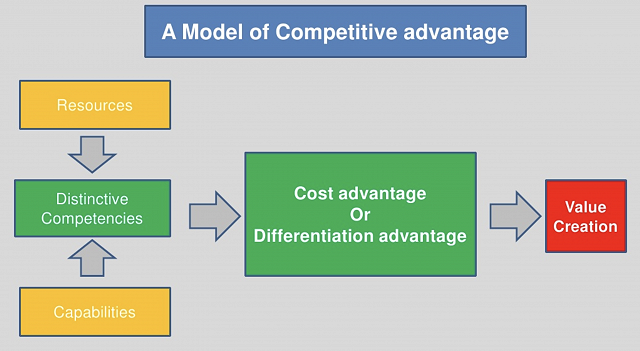On the 1st February 2020, Hatch Quarter conducted a Startup Essentials Masterclass for the First Gens 2.0 Cohort. Our topic was Understanding Competition and Building Team Culture.
This three-part blog series details the key points from our Masterclass, namely:
Part 1: Understanding Competitive Advantage
Part 2: Your Team is Your Advantage
Part 3: Building a Team Culture
What is Competitive Advantage and Why is it important for startups?
Competitive advantage is simply a quality that positions an organisation’s products and services in a more desirable manner (source).
Identifying a competitive advantage can serve as a foundation for your startup because it allows you to understand where your core strengths and accordingly, where to focus your resources, and what positioning to take in the market.
The three factors that enable you to determine your competitive advantage
- Target market - Identify your customers and their specific needs, pains, and problems. Understand your customers and know how their lives will be improved by the product or service.
- Competition - Identify your competitors - they could either be those with similar products, or those with different solutions that address the same problem your startup is solving. With an understanding of your target market, knowing your competition’s strengths and weaknesses enables you to pinpoint where the market is underserved (source).
- Benefit - You can identify the real benefit of your product or service, by knowing how it fills the gap in the market. Be sure to distinguish between benefits and features, always think of the elements included in your solution from the perspective of how they benefit your target market.
What are some examples of competitive advantage?
- Having access to resources or data that competitors don’t.
- A highly skilled team.
- A unique geographical setting.
- Sole access to new technology.
- Brand recognition.
What are the types of competitive advantage?
The model below details the different types of competitive advantage. There are two main variables under this model that impact the type of competitive advantage you end up with, your Resources and Capabilities which would either result in a Cost or Differentiation Advantage.

Determining Competitive Advantage (source)
The cost leadership or cost advantage strategy entails being the lowest-cost producer of a product or service. This can be attained through innovation or mass-scale production that exploits economies of scale. Through this, the company can establish a low selling price that cannot be matched by competitors.
On the other hand, the differentiation strategy enables companies to differentiate their products and services from competitors. This can be done by delivering superior or innovative products and services, thereby allowing the company to price their offerings at a premium cost.
Meanwhile, the focus strategy allows a company to position its products and services towards a specified narrow segment. This strategy can be further divided into either focused cost-leadership or focused differentiation. This approach is successful if companies can create a product or service that successfully caters to their narrower market’s more specific needs (source).
Some of the ways competitive can be attained
- Focusing on addressing the gap in the market.
- Protecting your intellectual property.
- Patenting your technology.
- Formalising key partnerships and agreements.
- Securing major clients.
Key Takeaways
- Competitive advantage serves as the basis of whether your product or service is what your market wants. It is the underlying quality that positions your offering more desirably against your competition.
- Examples of competitive advantage are (1) cost leadership, which positions you as the provider of the lowest cost product, (2) differentiation, which positions you as a prover of a distinct offering from your competitors, and (3) focus, which positions your offering to a narrow segment.
Image is from >> https://www.woodenearth.com/blogs/wooden-blog/disadvantages-of-playing-chess